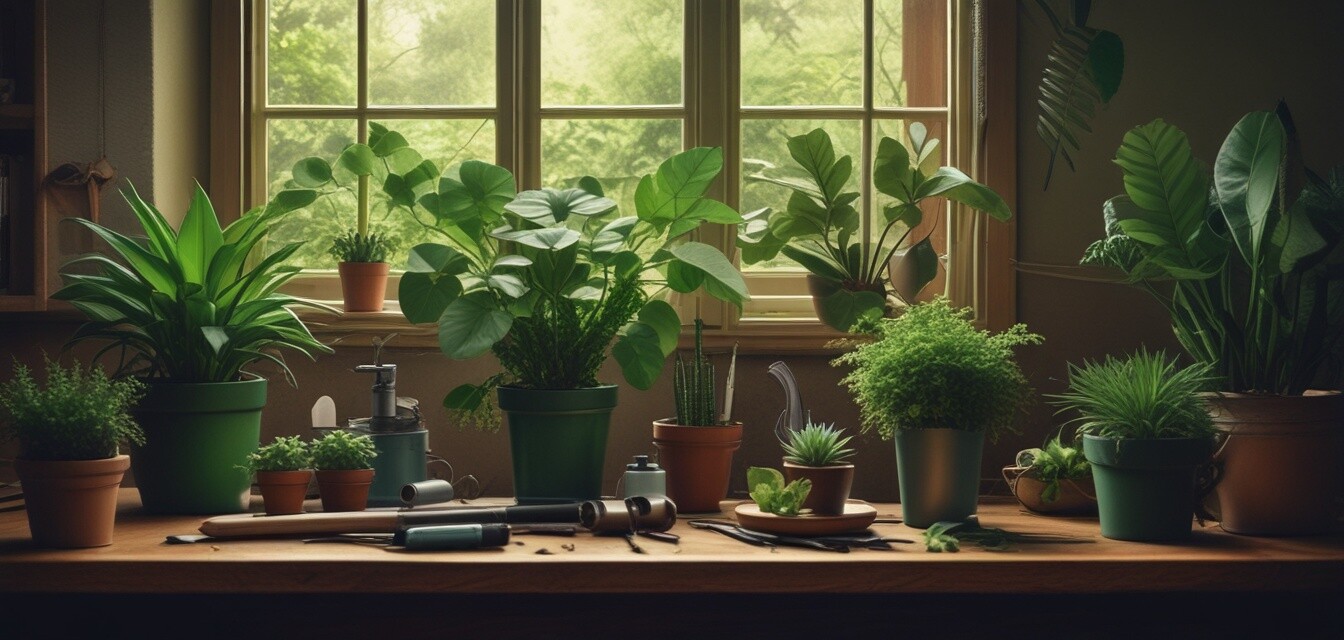
How to Fertilize Your Houseplants Effectively
Key Takeaways
- Understanding plant nutrients is crucial for healthy growth.
- Use the right type of fertilizer based on the plant's requirements.
- Timing is essential – fertilize during the growing season.
- Always follow the manufacturer's instructions to avoid over-fertilization.
Fertilizing your houseplants is a vital part of plant care that ensures your green companions receive the nutrients they need for vibrant growth. In this article, we will explore effective methods and best practices for fertilizing your houseplants, so they thrive in your home.
Understanding nutrients essential for growth
Houseplants require essential nutrients to flourish, primarily divided into macronutrients and micronutrients:
| Nutrient Type | Main Nutrients | Benefits |
|---|---|---|
| Macronutrients | Nitrogen (N), Phosphorus (P), Potassium (K) | Promotes growth, flowering, and root development. |
| Micronutrients | Iron, Manganese, Zinc, Copper, Boron | Supports overall plant health and metabolic functions. |
Choosing the right fertilizer
When selecting fertilizer for your houseplants, consider the following types:
- Liquid Fertilizer: Easily applied, quickly absorbed by plants.
- Granular Fertilizer: Slow-releasing nutrients, ideal for long-term feeding.
- Organic Fertilizer: Natural options that improve soil quality.
- Specialized Fertilizers: Tailored for specific plant types (e.g., orchids, succulents).
Best practices for fertilizing houseplants
1. Fertilizing schedule
Most houseplants need fertilization during their growing season, typically spring and summer. Reduce or stop fertilization during fall and winter when plant growth slows down.
2. Dilution and application
Always dilute liquid fertilizers according to the instructions provided. Apply during watering to help the plant absorb nutrients effectively without burning the roots.
3. Signs of nutrient deficiency
Be vigilant about your plants’ health. Here are common signs that your plants may need more nutrients:
- Yellowing leaves
- Stunted growth
- Poor flowering or fruiting
Common mistakes to avoid
Tips for beginners
- Start with a balanced fertilizer to cover basic needs.
- Don't fertilize recently repotted plants – wait a month.
- Keep track of your plants to prevent over-fertilization.
- Remember, less is often more when it comes to fertilization!
Conclusion
Fertilizing your houseplants effectively is key to their health and growth. By understanding the essential nutrients, choosing the right type of fertilizer, and following best practices, you can keep your plants thriving. For more care tips, check out our Care Tips section to learn how to nurture various types of houseplants.
Pros
- Encourages healthy plant growth.
- Enhances flowering and fruiting potential.
- Improves vigor and resilience against stress.
Cons
- Over-fertilization can harm plants.
- Requires knowledge of plant-specific needs.
- Cost associated with purchasing fertilizers.
Now that you have the knowledge needed to fertilize your houseplants effectively, why not explore our low-maintenance houseplants or air-purifying plants for your home? With the right combination of care and nurturing, your indoor garden can flourish beautifully.

